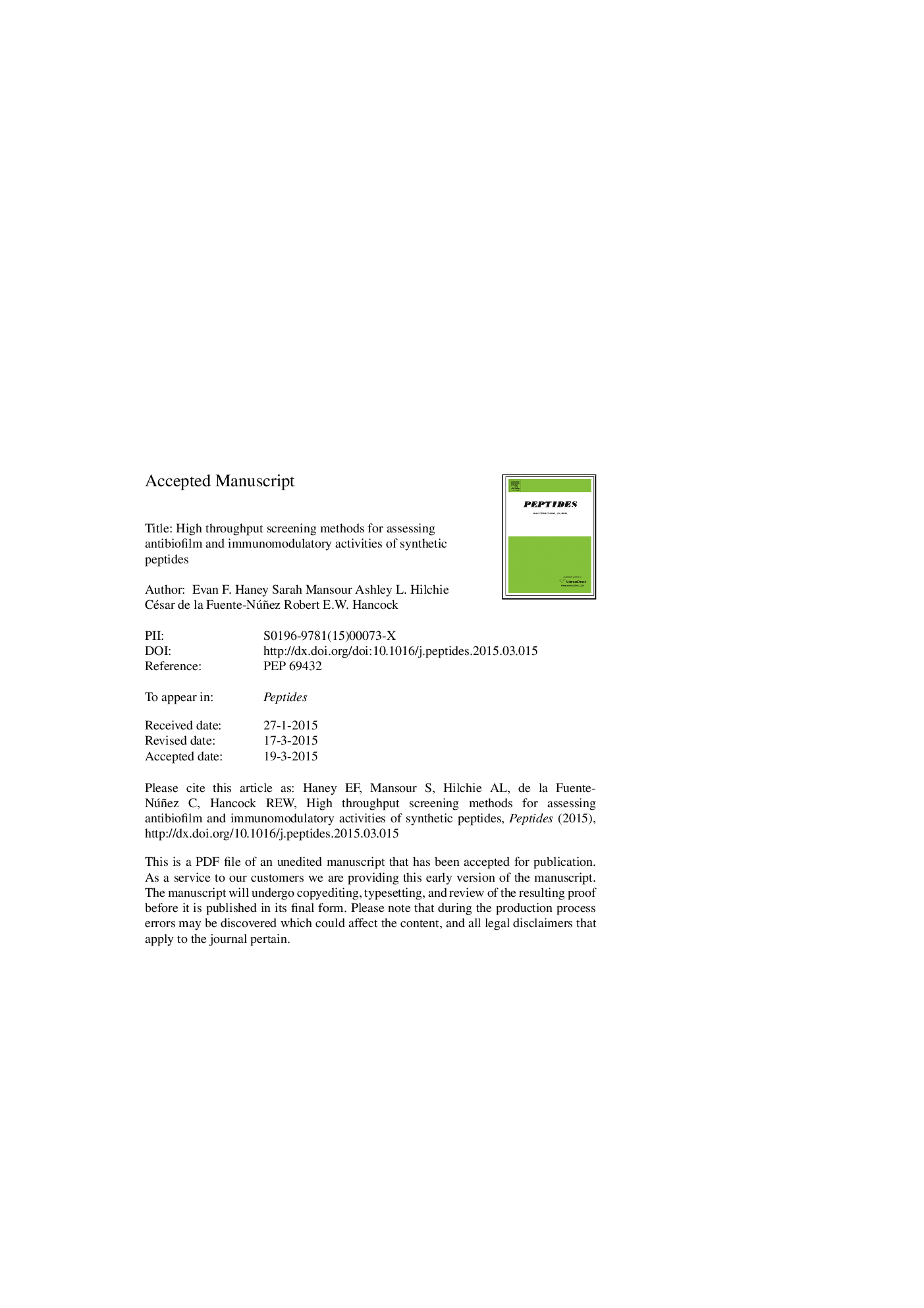| Article ID | Journal | Published Year | Pages | File Type |
|---|---|---|---|---|
| 8347992 | Peptides | 2015 | 29 Pages |
Abstract
The recent observation that certain cationic peptides possess potent antibiofilm activity demonstrated that small peptides could be used to treat biofilm-associated infections. Other so-called innate defense regulator peptides possess potent immunomodulatory properties such as leukocyte recruitment and suppression of harmful inflammation. A peptide that directly targets biofilm cells while favorably modulating the immune response would be particularly advantageous for treating serious skin infections caused by Staphylococcus aureus. In the present work, using SPOT-synthesized peptide arrays on cellulose membranes, we outline a strategy for systematically assessing the antibiofilm activity of hundreds of IDR-1002 (VQRWLIVWRIRK-NH2) and IDR-HH2 (VQLRIRVAVIRA-NH2) peptide variants against MRSA biofilms. In addition, the ability of these peptides to stimulate production of a monocyte chemoattractant protein (MCP-1) and suppress LPS-induced interleukin (IL)-1β production in human peripheral blood mononuclear cells (PBMCs) was evaluated. These results informed the synthesis of second-generation peptides resulting in a new peptide, IDR-2009 (KWRLLIRWRIQK-NH2), with enhanced MCP-1 stimulatory activity, favorable IL-1β suppression characteristics and strong antibiofilm activity against MRSA and Pseudomonas aeruginosa biofilms. This work provides a proof-of-concept that multiple peptide activities can be optimized simultaneously to generate novel sequences that possess a variety of biological properties.
Keywords
LPSHDPBM2DPCIDRIL-1βMCP-1SDSPBMCAMPenzyme linked immunosorbent assayMRSAMethicillin resistant Staphylococcus aureusInterleukin-1 betaBacterial biofilmsELISADodecylphosphocholinecircular dichroismsodium dodecyl sulphatePeripheral blood mononuclear celllactate dehydrogenaseLDHlipopolysaccharidemonocyte chemotactic protein 1Immunomodulatory peptidehost defense peptideAntimicrobial peptide
Related Topics
Life Sciences
Biochemistry, Genetics and Molecular Biology
Biochemistry
Authors
Evan F. Haney, Sarah C. Mansour, Ashley L. Hilchie, César de la Fuente-Núñez, Robert E.W. Hancock,
